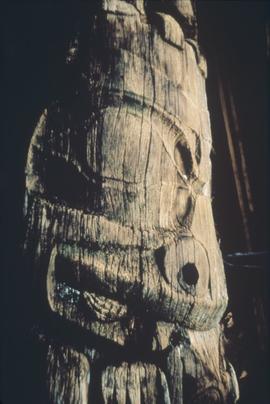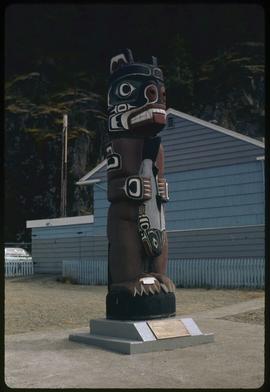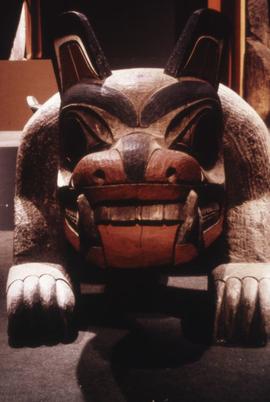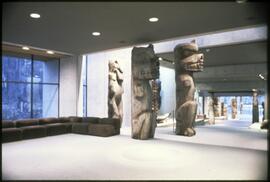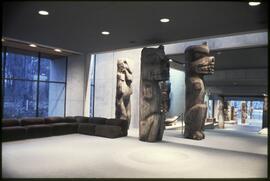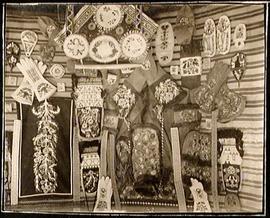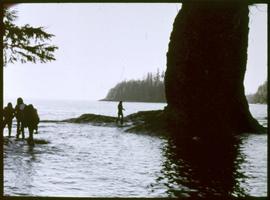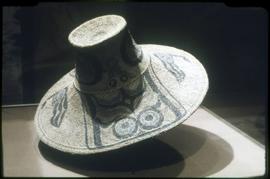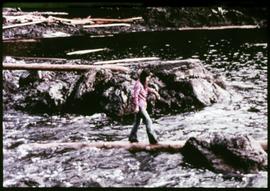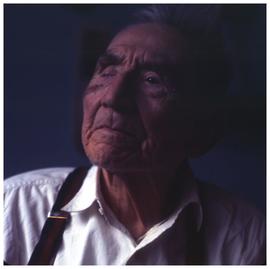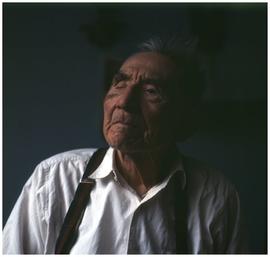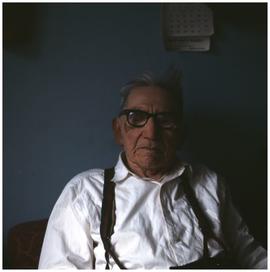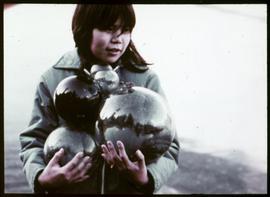- 51-01-29-a039465
- Pièce
Fait partie de Harry B. Hawthorn fonds
Image of a section of a totem pole, featuring a beaver, on Anthony Island, Haida Gwaii. This appears to be a pole now housed at the Museum of Anthropology (museum item #A50013). This museum item has the following description: "Base section of a wooden totem pole, crescent shaped in cross section and carved in shallow and deep relief. Depicted is a seated beaver with one potlatch ring between erect ears; protruding upper incisors; raised forepaws and hind paws grasping chewing sticks. Below its rectangular shaped crosshatched tail is a human face with large circular eyes. Traces of blue in eye sockets and around nostrils... Beaver was one of crests owned by the lineage of Chief Ninstints (Tom Price), 'Those Born Up the Inlet', of the Eagle moiety... Remainder of pole, except top figure, burned when the village was burned in 1892 by the Koskimo and the crew of a sealing schooner. ."


